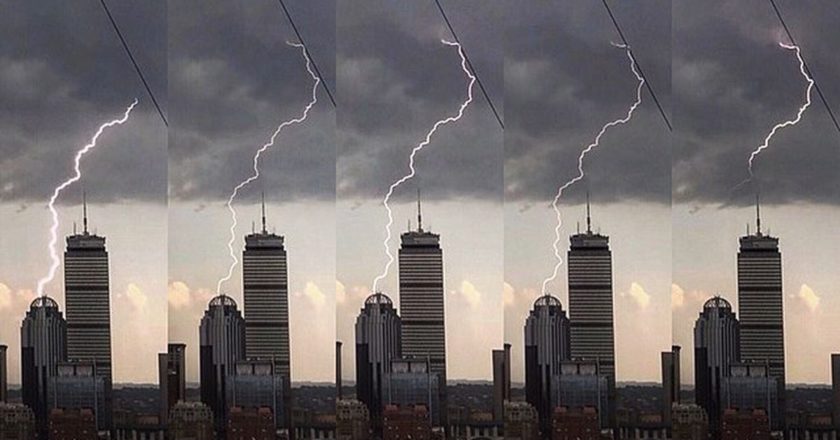Future’s Now, Ethereum: Unto Faith and Flame Toward Serenity
January 31, 2019 by William Peaster
Advancing toward its Serenity “ETH 2.0” upgrade, Ethereum and its ecosystem are evolving. And while building and soul searching proliferate in the project’s community, stakeholders are pulling what’s certain and what’s uncertain, and thus the future, into the fore.
Also read: Lightning Network Goes to Congress as Specter of Crypto Policy Grows
Subscribe to the Bitsonline YouTube channel for great videos featuring industry insiders & experts
v0.1 of Ethereum 2.0 Serenity Specification Released
On Jan. 31st, the Ethereum ecosystem welcomed the v0.1 release of the ETH 2.0 spec. It’s the latest advancement to put Ethereum closer to achieving its Serenity upgrade, which would actualize a scaling triumvirate of Casper, Plasma, and sharding.
Today marks the very first ETH2.0 version release. Congrats everyone! 🎉 https://t.co/8lh2x0TPyJ
— Terence Tsao (@terenc3t) January 31, 2019
“[This] marks the first release in a series of weekly releases through February 2019,” the spec’s introduction read.
“Phase 0 in v0.1 is relatively feature complete and approaching stable.”
That Phase 0, otherwise known as the Beacon Chain spec, is responsible for setting up the infrastructure that will power validators and validator attestations in Ethereum’s figuratively serene future. Phase 1, or the Shard Data Chains spec, will follow and be focused on shard chains, with more phases to come as well.
To better visualize the Beacon Chain’s structure and path toward Serenity, ETH 2.0 client builder Diederik Loerakker recently built a helpful visual schematic that can be found on GitHub. A lot of parts have been moved into place for Ethereum, and more will be moved yet.
What We Talk About When We Talk About the Price’s Future
Beyond the ETH 2.0 v0.1 spec release, there has been no shortage of soul searching throughout the wider Ethereum community recently.
Likewise, one interesting argument this week came from SpankChain CEO Ameen Soleimani, who made a case that the ether price should be “optimized for” because “security is a function of ETH price.”
So @VitalikButerin put me on the spot asking me how to optimize for the ETH price and I gave my thoughts on the subject
A thread👇 https://t.co/Dz2yqd19Yn
— 👹 Ameen Soleimani (@ameensol) January 29, 2019
In his argument, Soleimani said Ethereum’s builders should be willing to be aggressive going forward to ensure the blockchain’s technical and reputational security, e.g. by forking Polkadot, the fledgling multi-chain network, “to add a way to plug your parachain directly into the Ethereum blockchain instead of the Polkadot beacon chain.”
If dominance can be accordingly consolidated, Soleimani thinks central banks may turn to Ethereum as the go-to settlement layer for forthcoming “bankchains.”
Others, like Ethereum Name Service lead developer Nick Johnson, have argued the other side of the coin, contending that price optimization from an engineering standpoint is moot. Alas, the debate is on in the months and years ahead.
Why don’t we talk about price? Because it’s a distraction. There’s nothing we can do about it as an engineering problem, and so discussing it is both pointless and introduces a massive amount of irrelevant noise.
— Nick ‘no Nick’ Johnson (@nicksdjohnson) January 30, 2019
Aragon: Love You Ethereum, But I’m Flirting with Polkadot
In his aforementioned rallying cry for ETH price optimization, SpankChain’s Soleimani decried the steady migration of Ethereum developers to “other chains” as ground being lost.
Even in recent weeks, some users, specifically gamblers, have seemingly begun spreading out to different platforms like EOS and TRON.
Amid this context, the Aragon project’s AraCon2019 conference this week brought another related wrinkle of intrigue, as Aragon’s developers disclosed therein they were exploring building their own blockchain on Polkadot while they still worked on Serenity.
Aragon announces that they are investigating launching their own blockchain on @polkadotnetwork, in parallel to Ethereum scaling research. This is an early warning sign (first of many?) that Ethereum risks losing its edge if it doesn’t scale soon.@izqui9 onstage at #AraCon2019 pic.twitter.com/hILXy6UcmT
— Lane Rettig (@lrettig) January 29, 2019
Of course, that revelation is still a far cry from Aragon announcing a permanent migration from ETH, but some in the space have taken it to heart.
“If that doesn’t light a fire for us I don’t know what will,” Ethereum core developer Lane Rettig noted.
Vlad Zamfir Launches Crusade Against ‘Szabo’s Law’
Prominent Ethereum Foundation researcher Vlad Zamfir — the mind behind CBC Casper — published an editorial last week titled “Against Szabo’s Law, For a New Crypto Legal System.”
Against @NickSzabo4‘s Law, For A New Crypto Legal System
I am willing to die on this hill.https://t.co/OrVs4Jiytx
— Vlad Zamfir (@VladZamfir) January 26, 2019
In it, Zamfir made an impassioned argument against what he called blockchain governance minimization or “Szabo’s law,” derived in name from cypherpunk pioneer Nick Szabo’s advancements of fully autonomous software.
“Szabo’s law is simple: Do not implement changes to the blockchain protocol unless the changes are required for the purpose of technical maintenance,” Zamfir wrote.
The researcher went on to argue that Szabo’s law was extremely undesirable as it was sure to “eventually become illegal”; was “politically loaded”; was “insecure” and “aggressive” in its legal posture; and was unlikely to be “socially scalable.”
In the aftermath of publication, the unabashed call-out earned Zamfir a block from Szabo on Twitter. Yet the former has remained altogether undeterred in his new crusade.
“All cypherpunks want to empower people and put pressure on governments,” Zamfir later said on Twitter.
“Some naively think that this requires fully autonomous software.”
And while Ethereum co-creator Vitalik Buterin has published his own thoughts on Zamfir’s call to action, the newly outlined school of thought is sure to figure into Ethereum governance discussions in the future — wherever they may lead.
Tomorrow Is Here Today
Even beyond just Ethereum, there’s so much technical progress now occurring throughout the cryptoverse that it can be difficult to fit your head around it all.
It may be the crypto winter for price, but it feels like the the summer for innovation. Decentralized lending, interest, derivatives, prediction markets, Lightning and L2, zk-SNARKS/STARKS, bulletproofs, staking, stablecoins…lot of good things happening across the ecosystem.
— Balaji S. Srinivasan (@balajis) January 29, 2019
Regardless of the cryptoeconomy’s major 2018 correction, the space’s builders currently find themselves in an ecosystem teeming with more possibilities and competition than ever before.
This is the atmosphere amidst which Ethereum and all cryptocurrency projects are gunning toward the horizon. Of course, what happens next for any and all of them remains ever unclear, but it’s always possible to take stock of the present — its certainties and uncertainties — to see the path afoot.
Payment processors like DaiPay are the next *vital* piece to propagate payments on Ethereum. The faster that traditional merchants and everyday users can gain access to DAI, the better! https://t.co/jwSiBB0XU0
— Eva Beylin (@evabeylin) January 29, 2019
As for Ethereum, what’s here now is already bustling. Take the fresh launch of the cross-client Proof-of-Authority Goerli testnet, for example. Even bitcoin, courtesy of BitGo and 26 other partners, is now “wrapped” on the Ethereum blockchain. And what’s to come, if successful, should generate exponentially more bustle.
Ethereum 2.0 is happening. https://t.co/Xa8qtsbMii
— Afri ⬙ (@5chdn) January 28, 2019
Those potentially forthcoming bankchains won’t settle themselves, after all.
What’s your take? As Ethereum continues advancing toward Serenity, what would you give the project on its report card? What would you like to see from it personally? Let us know in the comments section below.
Images via Diederik Loerakker, Pixabay




